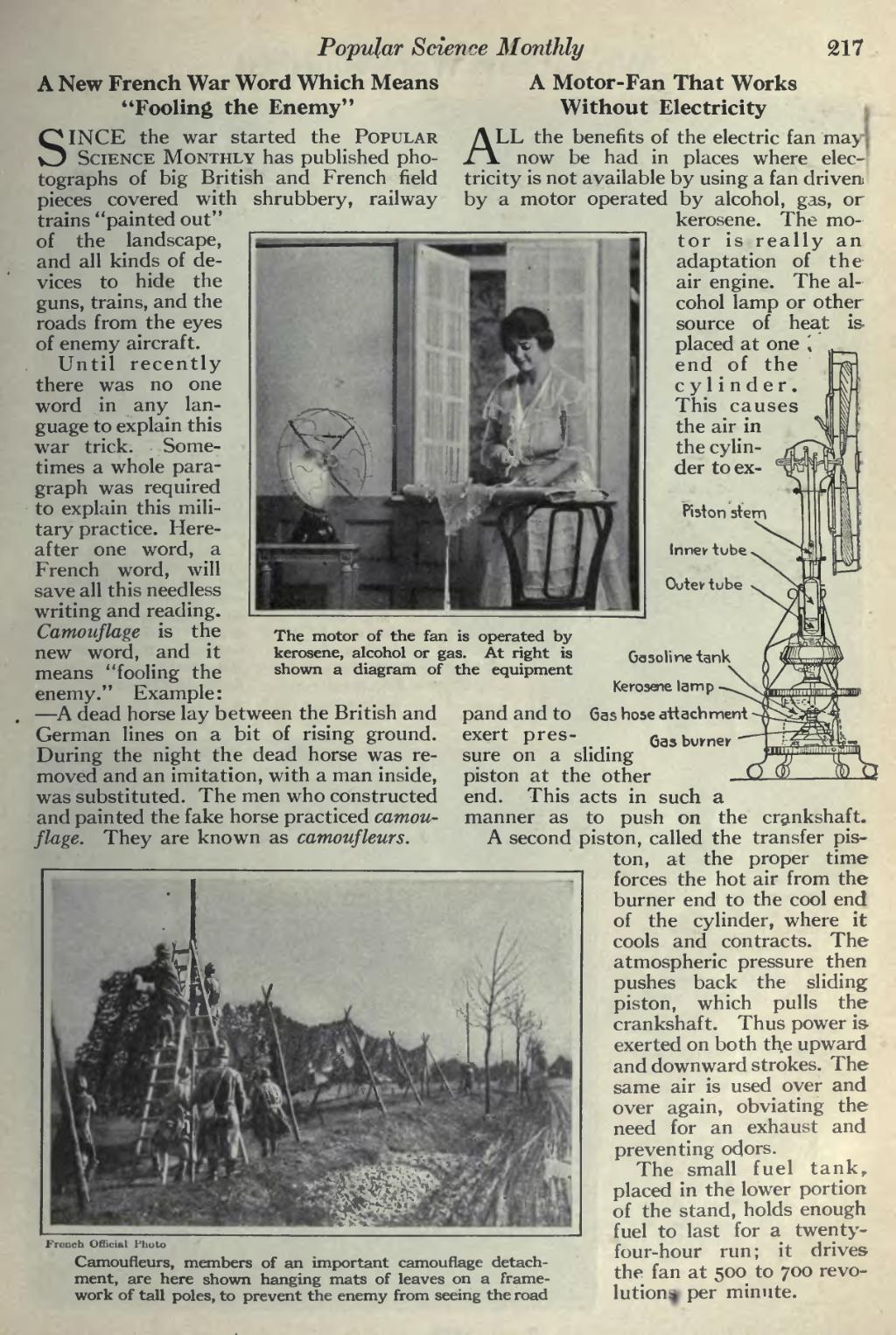Popular Science Monthly 217
A New French War Word Which Means A Motor-Fan That Works
"Fooling the Enemy" Without Electricity
SINCE the war started the Popular A LL the benefits of the electric fan mayj Science Monthly has published pho- tographs of big British and French field pieces covered with shrubbery, railway trains "painted out"
��A L
��of the landscape, and all kinds of de- vices to hide the guns, trains, and the roads from the eyes of enemy aircraft.
Until recently there was no one word in any lan- guage to explain this war trick. Some- times a whole para- graph was required to explain this mili- tary practice. Here- after one word, a French word, will save all this needless writing and reading. Camouflage is the new word, and it means "fooling the enemy." Example: — A dead horse lay between the British and German lines on a bit of rising ground. During the night the dead horse was re- moved and an imitation, with a man inside, was substituted. The men who constructed and painted the fake horse practiced camou- flage. They are known as camoufleurs.
���now be had in places where elec- tricity is not available by using a fan driven by a motor operated by alcohol, gas, or kerosene. The mo- tor is really an adaptation of the air engine. The al- cohol lamp or other source of heat is- placed at one end of the cylinder. This causes the air in the cylin- der to ex- Piston stem Inner tube Outer tube
��The motor of the fan is operated by kerosene, alcohol or gas. At right is shown a diagram of the equipment
��Gasoline tank Kerosene lamp Gas hose attachment Gas burner
��� � � �gm
� �; |
� � �Ibptt
�BvH^KWMflgy^M^H
� � �■ .
��French Official Photo
Camoufleurs, members of an important camouflage detach- ment, are here shown hanging mats of leaves on a frame- work of tall poles, to prevent the enemy from seeing the road
��pand and to exert pres- sure on a sliding piston at the other end. This acts in such a manner as to push on the crankshaft. A second piston, called the transfer pis- ton, at the proper time forces the hot air from the burner end to the cool end of the cylinder, where it cools and contracts. The atmospheric pressure then pushes back the sliding piston, which pulls the crankshaft. Thus power is- exerted on both the upward and downward strokes. The same air is used over and over again, obviating the need for an exhaust and preventing odors.
The small fuel tank, placed in the lower portion of the stand, holds enough fuel to last for a twenty- four-hour run; it drives the fan at 500 to 700 revo- lution^ per minute.
�� �
